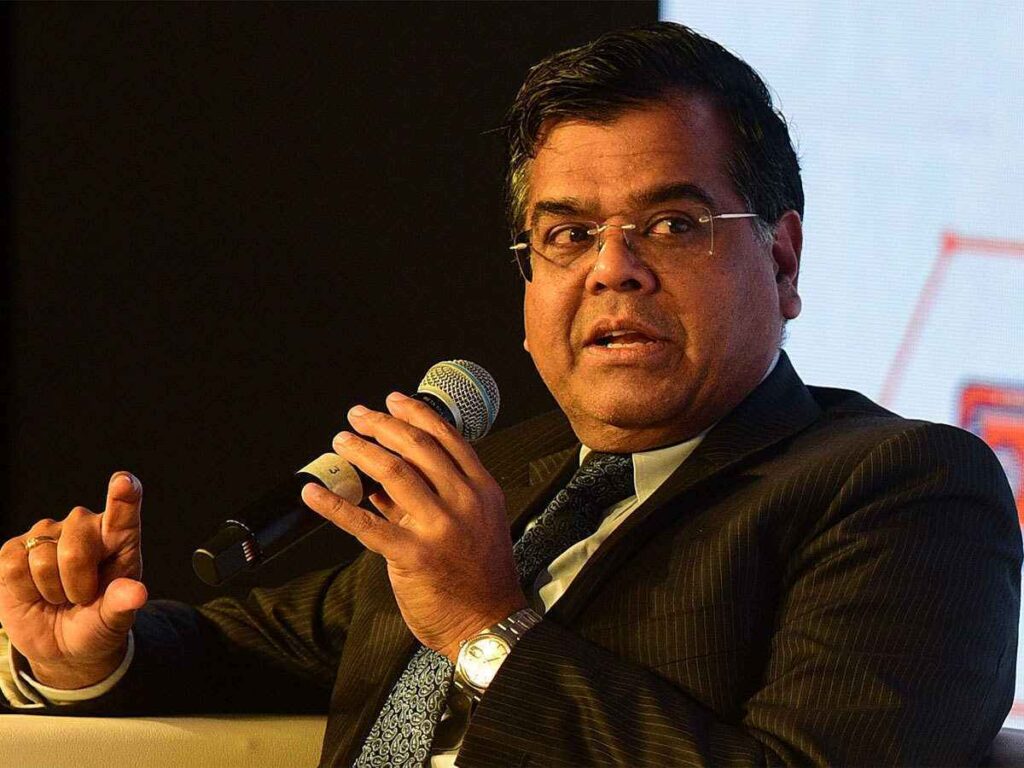In keeping with its predictions from the start of this fiscal year, the finance secretary anticipates that the economy would expand by 7 to 7.5 percent in 2022–2023. India saw growth of 8.7% in 2021–2022
“We are still on track to meet the 7.4%. We aim to succeed. This doesn’t exactly correspond to the yearly real GDP growth that is anticipated. Therefore, that range is between 7 and 7.5%. The IMF has forecasted a 7.4% growth rate ” T V Somanathan, the finance secretary, stated on Wednesday.
He was briefing reporters following the announcement of the GDP figures, which revealed that the economy expanded by 13.5% in the April–June quarter, far less than the RBI’s forecast of 16.2%.
“I won’t make a prediction that is more accurate than the RBI, but I will say that today’s statistic in no way deviates from what was anticipated and what we still expect. It is entirely compatible with the forecast of real GDP growth of between 7% and 7.5%. That is entirely compatible with it “said he.
Also Read: Pakistan aid agencies demand restrictions on food import from India
Henceforth, he explained, this is fairly consistent with both the Reserve Bank of India’s and international organizations’ yearly projections. For the current fiscal year, the RBI has forecasted growth of 7.2%. With a growth rate of 13.5%, the GDP has surpassed pre-pandemic output by over 4%, according to him.
Economic Affairs Secretary Ajay Seth provided his analysis of the most recent GDP figures, noting that the first quarter of 2022–2023 had annual growth rates for contact-intensive services of 25.7% and 16.8%, respectively, and construction of 16.8%.
Gross fixed capital formation (GFCF) as a share of GDP (at 2011–12 prices) was 34.7%, the highest in the first quarter in the previous ten years. This increase was attributed to a number of government reforms and policies that helped to revitalise the capex cycle and crowd out private investment, according to Seth.
According to him, the government has continued to promote investment activity, with capital expenditure reaching 1.75 lakh crore in the first quarter of 2022–23, or 23.4% of the budget projection and 57% more than in the same period the previous year.
The first quarter saw very robust fixed capital creation and private spending, which is encouraging for the economy, he continued. According to Seth, India has suffered less of a trade-off between growth and inflation than other big peer economies because of its comparatively rapid growth and low inflation.
Also Read: Jacqueline Fernandez eroded Sukesh’s criminal background to extort money: ED report
In July 2022, retail inflation in India (CPI-C) decreased to a five-month low of 6.71 percent. Regarding the prognosis for the second quarter, he stated that the strong performance of High-frequency indicators in July and August 2022 implies continued growth in the July-September timeframe.

The manufacturing PMI reached an eight-month high of 56.4 in July 2022, helped by increases in output and new business orders. According to him, services activity continued to grow well in the expansionary zone in July 2022, with a PMI services value of 55.5.
From Q1 FY 2022–23, the double-digit growth in total bank credit and non-food credit persisted in July 2022, with the indicators showing growth rates of 13.4% and 13.9%, respectively. This expansion was sparked by a rise in credit flows to industry and services, he observed.
According to Seth, the slowdown in exports and the high price of crude oil will be the main problems for the Indian economy in the second half. But according to Somanathan, the private sector may continue to invest in capital despite the higher interest rates.
According to the finance secretary, India’s private sector is not very sensitive to interest rates, and increases of 75 to 100 basis points might not discourage private investment.
Somanathan stated that because the Chinese economy is so large, any downturn will have an influence on all other economies that conduct business with the Asian powerhouse.
Also Read: Narendra Modi to inaugurate science and technology conclave on 10th Sept
“India and China engage in significant commerce, but in this instance, our trade deficit works in our favor because we are net importers rather than exporters. As a result, unlike other nations, our exports are less likely to be impacted by the Chinese slowdown because we really have substantial net imports. Consequently, the issue is less important to us than it is to certain other regional economies ” he explained.

